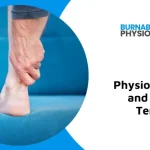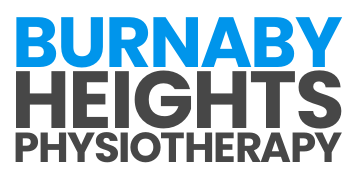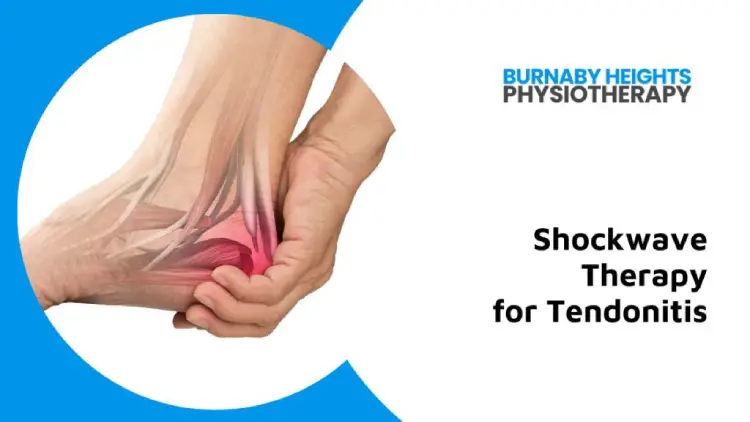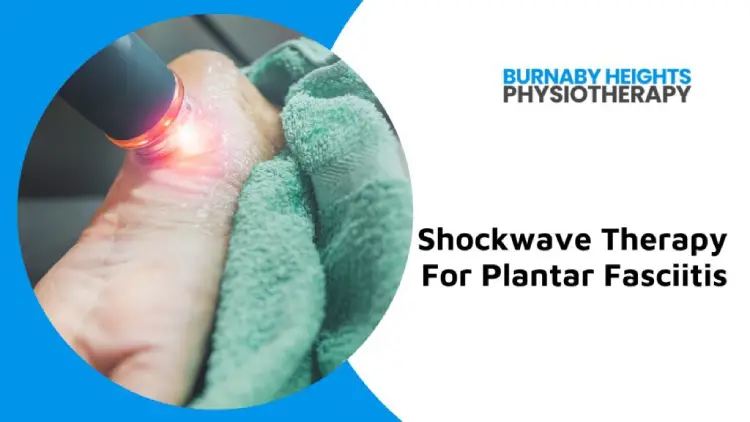
Seven Health Benefits Of Dry Needling Through Physiotherapy Care
November 7, 2022
Physiotherapy and Achilles Tendonitis: A Comprehensive Guide
December 8, 2022Shockwave Therapy for Tendonitis: Natural, Safe, and Effective Treatment
Tendons are the tough, fibrous connective tissue in our muscles that link up the muscles and the bones to make sure that when we move a particular muscle, it tugs on the bone and produces motion. They are extremely vulnerable to strain and stress due to their restricted mobility and the hefty weights they support during everyday activity.
Tendonitis is a very painful inflammation of the tendons. The damaged tissue may be caused by overuse, tension, or some other action that places excessive stress on your tendons. In fact, practically any recurring motion may possibly lead to tendonitis — especially among individuals who devote a substantial period of time doing it. (It additionally doesn’t help that we devote a lot of time stooping over our cell phones and desk jobs.)
Tendonitis may render it tough for you to move without any discomfort, weakness, and stiffness. If you’re a golfer, tennis player, or other sportsperson who frequently over uses their tendons, then you understand first-hand how aggravating and disabling it can genuinely be.
If left without treatment, tendonitis may even worsen and end up being a chronic condition, which is also called tendinosis. With this health condition, the tendon becomes weakened and doesn’t heal properly. If left without treatment for too long, it might not ever heal completely or go back to normal function again.
Thankfully, with the right therapy at the right time, you will get back to your regular activities in no time, with no lingering effects from your burst of tendonitis — just keep reading for all the information!
What is Shockwave Treatment?
Shockwave treatment, also referred to as “extracorporeal shockwave therapy” (ESWT), is a pain-free, non-invasive therapy that has been shown remarkably successful in the treatment of tendonitis. It employs tightly-focused sound shock waves that are produced by a tool to make very small tears in your tendons to promote connective tissue healing.
Shockwave treatment is often applied as an alternative to surgery to deal with a number of conditions, including tennis elbow, knee pain, and shoulder tendonitis. Shockwave treatment is performed in a medical setting with a gel cushion or pad to protect the skin. The pad delivers energy in the form of sound waves to your tendons. The sound waves induce the fluid in your tendons to vibrate and create micro-injuries that promote recovery.
How Does Shockwave Treatment Help Alleviate Tendonitis?
Shockwave therapy works by producing micro-injuries in your tendons. Upon making these micro injuries, your body initiates a healing system that creates new collagen and restores your tendon to correct health and function. This is called the “regenerative” process, and it makes it possible for your body to restore broken tissues and restore them to their regular state of function and wellness. This is one of the many ways in which shockwave treatment helps with tendonitis!
Another reason shockwave treatment can be effective for tendonitis is due to the fact that it doesn’t require any oral or topical medicines that might have side effects and are usually associated with other therapies for tendonitis. This can be extremely helpful for individuals who want to avoid unnecessary side effects or for those who are allergic to certain drugs.
With shockwave therapy, you can concentrate on getting better and feel certain that you’re receiving the best possible care for your disorder.
The Advantages of Shockwave Treatment for Tendonitis
Employing shockwave treatment to alleviate tendonitis has a variety of advantages versus other therapies, including:
- No Side Effects: Among the most obvious advantages of shockwave therapy is there are no adverse effects and no danger of any negative reactions. The treatment is totally safe and does not involve any prospective adverse effects like topical or oral medications do. What’s more, shockwave is a non-invasive, non-surgical treatment technique, so there’s no danger of complications from surgery.
- No Needles: Another benefit is that with shockwave therapy you will not need to face the pain and discomfort of shots. Many treatments for tendonitis include injecting the affected area to induce the recovery process, but shockwave treatment does not. You can get the very same outcomes without needing to deal with the discomfort and inconvenience of hypodermic injections.
- No Lost Time: Another advantage of shockwave treatment is that you will not have to fret about having to take time away from work or being inactive while your tendon heals. The treatment is pain-free and doesn’t require any lost time.
- No Long-lasting Negative Effects: One of the biggest benefits of shockwave therapy for tendonitis is that it does not include any long-term adverse effects. You can rest assured you won’t need to tackle any complications or negative reactions in the future. As a matter of fact, the regenerative process that shockwave treatment triggers can actually help prevent future tendon damages!
Are there any Side Effects of Shockwave Treatment?
Shockwave treatment doesn’t have any substantial or long-lasting side effects. While there might be some slight pain or mild inflammation after the therapy, these negative side effects aren’t extremely prominent and will disappear on their own in a few days. There’s also no risk of damaging neighboring nerves or tissues.
It ought to be born in mind that shockwave treatment isn’t appropriate for everyone. People with specific health conditions such as pregnancy, open wounds or infection, or an allergy to ultrasound ought to avoid it. It’s always best to ask your doctor or physiotherapist if shockwave therapy is right for you.
Just How Much Does Shockwave Therapy Cost?
The expense of shockwave treatment for tendonitis differs from center to center and from person to person because every condition and circumstance is different. It is ideal to discover a center in your local area and visit them in person to get a quote for your particular treatment. Make certain to inquire about any insurance protection that may be available to you.
If you have medical insurance, make sure to look at your protection and see if it includes shockwave treatment for tendonitis. If it does, you can normally make a consultation with a physiotherapist or professional near you and get treated straight away. If you don’t have insurance coverage, you can still check out a center and find out if they offer a payment plan or treatment financing alternative to make the therapy more economical.
How Many Sessions Will You Have?
The quantity of shockwave therapy in Burnaby sessions you need will vary depending on the severity of your tendonitis and your response to the therapy. You will probably start to feel benefits in between two and five sessions. The best way to know when you can stop receiving treatment is to track your progression with a pain and symptom tracking app like Healio. If you have health insurance, make sure to bring it to your session. This’ll help you get the most out of your therapy and improve quicker.
Where Can You Get Shockwave Treatment for Tendonitis?
As we pointed out earlier, shockwave treatment is usually received in a medical center. If you are feeling pain and discomfort from tendonitis, it is essential to seek treatment as soon as possible to stop the condition from worsening. Especially if you’ve tried other therapies and they weren’t successful, then it’s well worth giving shockwave treatment a try.
Give us a call at Burnaby Heights Physiotherapy soon and we can begin easing your tendonitis discomfort. Now booking new clients!




